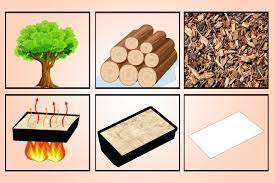Handmade paper production is a centuries-old craft that combines traditional techniques with artistic flair to create unique and exquisite paper products. From delicate stationery to intricate artworks, handmade paper holds a special allure, offering a tactile and aesthetic experience that is unmatched by mass-produced alternatives. Let’s delve into the enchanting world of handmade paper production and discover the passion and craftsmanship behind this time-honored tradition.
- Artisanal Techniques: Handmade paper production begins with the careful selection of raw materials, including high-quality fibers such as cotton, linen, or plant materials like bamboo and mulberry. These fibers are meticulously prepared and beaten to create a pulp, which is then poured onto a mesh screen and formed into sheets by hand. Artisans employ various techniques, such as deckle edges and watermarking, to add character and distinction to each sheet of paper.
- Creative Expression: Handmade paper offers endless possibilities for creative expression, serving as a blank canvas for artists, designers, and craftspeople to explore their imagination and bring their visions to life. Whether used for painting, printmaking, calligraphy, or bookbinding, handmade paper adds a unique texture and dimension to artistic endeavors, enhancing the visual impact and emotional resonance of the finished work.
- Environmental Sustainability: In an age of mass production and environmental concerns, handmade paper production offers a sustainable alternative that prioritizes craftsmanship, quality, and environmental responsibility. By using natural fibers and traditional techniques, artisans minimize the ecological footprint of paper production, reducing the reliance on chemicals, energy, and water resources associated with industrial papermaking processes.
- Cultural Heritage: Handmade paper production is deeply rooted in cultural heritage, with artisanal traditions passed down through generations in regions around the world. From Japanese washi paper to Indian khadi paper, each cultural tradition brings its own unique techniques, motifs, and symbolism to handmade paper production, reflecting the rich tapestry of human creativity and ingenuity.
- Artisanal Communities: Handmade paper production often takes place within artisanal communities, where skilled craftsmen and women work together to preserve and perpetuate their craft. These communities serve as hubs of creativity and innovation, fostering collaboration, skill-sharing, and cultural exchange. By supporting handmade paper artisans, consumers not only acquire beautiful and unique paper products but also contribute to the preservation of traditional crafts and the empowerment of artisanal communities worldwide.
In conclusion, handmade paper production is more than just a craft; it is a celebration of tradition, creativity, and sustainability. By embracing the artistry and craftsmanship of handmade paper, we honor the legacy of generations past while shaping a more vibrant and sustainable future for artisanal communities around the world. So, whether used for artistic endeavors, personal correspondence, or decorative purposes, handmade paper invites us to slow down, appreciate the beauty of imperfection, and reconnect with the timeless art of papermaking by hand.
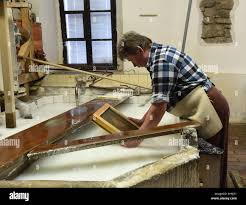
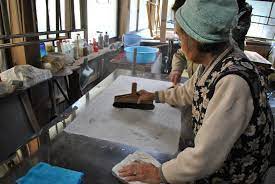
Exploring the Color Spectrum of Handmade Paper
When it comes to handmade paper, the color spectrum is as diverse as the imagination itself. From natural earth tones to vibrant hues, handmade paper comes in a captivating array of colors that add depth and character to any project. Let’s delve into the enchanting world of handmade paper colors and discover the myriad shades that grace this artisanal medium.
- Natural Earth Tones: Handmade paper often embraces the rustic charm of natural earth tones, including warm browns, soft creams, and subtle beiges. These colors evoke a sense of warmth and authenticity, making them perfect for rustic-themed weddings, vintage-inspired crafts, and eco-friendly stationery.
- Soft Pastels: For a touch of elegance and romance, handmade paper also comes in delicate pastel shades like blush pink, sky blue, and pale lavender. These soft hues add a whimsical and feminine touch to invitations, greeting cards, and other special occasion stationery.
- Rich Jewel Tones: To make a bold statement, look no further than handmade paper in rich jewel tones such as deep emerald green, royal sapphire blue, and regal ruby red. These vibrant colors command attention and are ideal for creating eye-catching artwork, statement pieces, and luxurious event décor.
- Earthy Naturals: Handmade paper artisans often experiment with natural dyes and pigments to create earthy hues inspired by the beauty of the natural world. From mossy greens and sandy yellows to terracotta oranges and slate grays, these colors reflect the rustic simplicity of nature and are perfect for eco-conscious projects.
- Custom Creations: In addition to the standard color palette, handmade paper can also be customized to match specific color schemes and themes. Artisans can blend different fibers, experiment with dyeing techniques, and even incorporate botanicals like flower petals and leaves to create one-of-a-kind papers tailored to individual preferences.
In conclusion, the color of handmade paper knows no bounds, offering a kaleidoscope of possibilities for artists, crafters, and designers alike. Whether you prefer the timeless elegance of natural earth tones, the soft allure of pastels, or the bold drama of jewel tones, handmade paper invites you to explore the endless possibilities of color and creativity. So, the next time you embark on a creative project, consider the unique beauty and versatility of handmade paper and let its colors inspire your imagination.
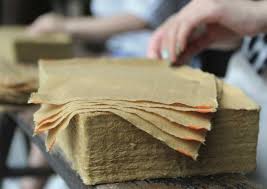
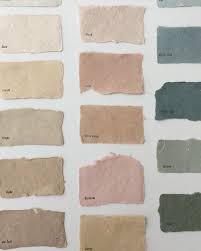
Unveiling the Artistry of the Handmade Paper Making Process
Handmade paper holds a special allure, captivating with its unique textures, artisanal charm, and rich history. Behind every sheet of handmade paper lies a labor of love, as skilled artisans employ traditional techniques to transform natural fibers into exquisite works of art. Let’s embark on a journey through the enchanting handmade paper making process and discover the craftsmanship and creativity that goes into every handmade creation.
- Selection of Raw Materials: The handmade paper making process begins with the careful selection of raw materials, including high-quality fibers such as cotton, linen, hemp, or plant materials like bamboo and mulberry. These fibers are chosen for their strength, texture, and suitability for the desired end product.
- Preparation of Pulp: Once the raw materials are gathered, they undergo a process of pulping to break them down into a fibrous pulp. This can be achieved through mechanical means, such as beating or grinding, or by soaking the fibers in water and allowing them to ferment. The resulting pulp forms the foundation of the handmade paper and determines its texture, opacity, and other characteristics.
- Sheet Formation: The pulp is then poured into a vat of water and carefully agitated to ensure an even distribution of fibers. A mold and deckle, typically made of wood or metal, are used to scoop up the pulp and form it into a sheet. The deckle, which is a frame with a screen attached, helps to control the size and thickness of the paper, while allowing excess water to drain away.
- Pressing and Drying: Once formed, the wet paper sheet is transferred onto a felt or cloth surface and pressed to remove excess water and improve its density. This can be done manually using a hydraulic press or mechanically using rollers. The pressed sheets are then transferred to a drying area where they are left to air dry naturally or placed in a drying chamber to expedite the process.
- Finishing Touches: After drying, the handmade paper may undergo additional treatments to enhance its appearance and durability. This can include trimming the edges to remove rough edges, smoothing the surface with a press or calender, or adding decorative elements such as watermarking or embossing. The finished sheets are then inspected for quality and packaged for distribution.
In conclusion, the handmade paper making process is a labor-intensive yet rewarding endeavor that celebrates tradition, craftsmanship, and creativity. From the selection of raw materials to the meticulous formation of each sheet, artisans infuse every step of the process with skill, care, and attention to detail. The result is a timeless work of art that embodies the beauty and elegance of handmade paper, inviting us to appreciate the artistry and craftsmanship that goes into every handmade creation.
